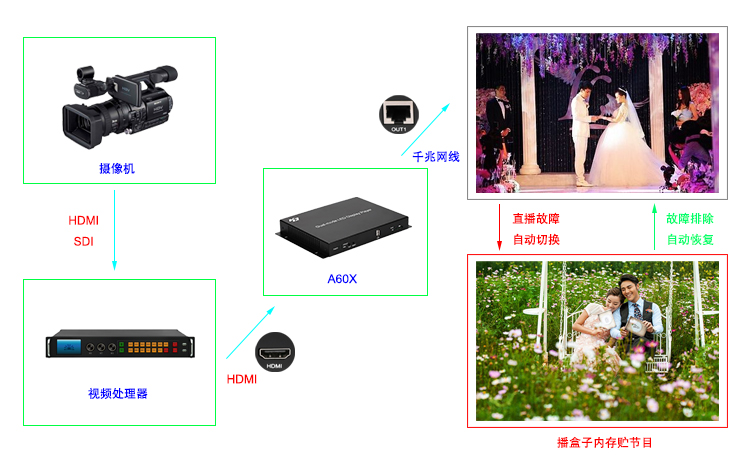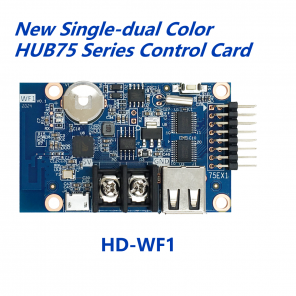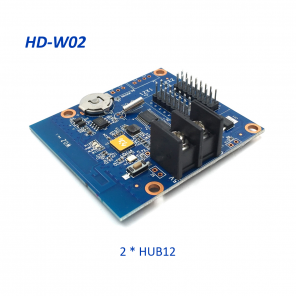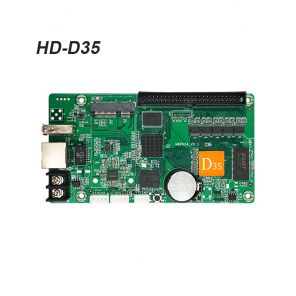Description


Huidu HDP902 Video Processor
Huidu HDP902 Video Processor Overview
The HDP902 is a powerful 3-channel multi-graphic multi-input splicing processor that can be used in a wide range of small and medium splicing applications, as well as for image switching and image scaling. The splicing processor has 3 channel splicing, 1 channel monitoring, and the widest can be spliced to 11520 points. It can also achieve equal-splicing, unequal splicing, display of different resolutions, three-screen splicing and other functions.。
Multi-channel video input – HDP902 can access up to 13 channels of video input, including 2 DVI, 4 HDMI, 2 VGA, 4 CVBS, 1 3G-SDI/SDI-LOOP (optional); Both receive standard resolution or high resolution video signals, DVI and VGA can receive up to 1920 × 1200 @ 60Hz resolution input.
Practical video output interface—The processor has 8 channels of video output, 7 channels of DVI, and 1 channel of SDI-LOOP.
Seamless switching of any channel—The HDP902 video processor can also seamlessly switch between any channel, and the switching time can be adjusted from 0 to 1.5 seconds. Use the fade switch effect to switch the input channel smoothly to switch to the second and third screens. With fast switching, you can instantly switch the video output when switching input channels.
Rich output resolution – HDP902 has designed a variety of practical output resolutions for users, 795W pixel custom resolution, the widest up to 11520 points, the highest up to 5760 points, for a variety of dot matrix display. Up to 20 output resolutions are available for user selection and can be adjusted to point-to-point output.
Support pre-switching technology—pre-switching technology is to predict in advance whether the switched input channel has a signal when switching the input signal. This function reduces the possibility of direct switching due to disconnection or no signal input, which increases the success rate of the show.
Support picture-in-picture-picture-in-picture technology, superimposing another picture with the same or different input while the original image is unchanged. HDP902’s picture-in-picture function not only can adjust the size, position, border, etc. of the overlay layer arbitrarily, but also multi-window seamless switching. When 1 screen is cut, the fade-in and fade-out effects can be realized, and 3 draws and draws 3 shots. Window) can also achieve fade effect.
Support pre-switching technology—pre-switching technology is to predict in advance whether the switched input channel has a signal when switching the input signal. This function reduces the possibility of direct switching due to disconnection or no signal input, which increases the success rate of the show.
The engineering lock can be set—the user can set the number of uses of the machine. When the number of uses is reached, the device can stop working.
Support for screen freeze – During playback, you may need to freeze the current screen to achieve a “pause” screen. When the screen freezes, the operator can also change the current input selection or change the line, etc., to avoid background effects affecting the performance.
Partial and full-screen fast switching—HDP902 has simple and practical part of the screen operation and full-screen operation. Any input channel can independently set different interception effects, and each channel can still achieve seamless switching. The user can arbitrarily set the size and position of the screenshot of the current channel, while the interception methods of other channels are unchanged. When switching, partial screen or full screen function is implemented between each channel.
Preset call function—The HDP902 uses 8 sets of user presets, and each set of user presets can store all user setting parameters.
The unequal splicing and splicing splicing-splicing function is an important part of the HDP902. It can realize halving and unequal splicing, which greatly meets the various needs of users in splicing. Frame synchronization, 0 delay, no tailing and other techniques are implemented in multiple processors to make the performance perfect. The unequal splicing and the screen part output are in the same setting mode, and the user can read the operation instructions of the following chapters in detail.
- bit image lossless scaling technology—HDP902 uses a dual-core image processing engine. A single core can handle 30-bit image scaling technology. The width can be output from 64 to 3840. At the same time, it can achieve 10 times image magnification output, that is, the widest reach. 38400.
That is, the ready-to-use technology—that is, the ready-to-use technology solves the user’s cumbersome setup and manual storage process, that is, the user does not need to perform manual save operation after adjusting or adjusting parameters, and the HDP902 automatically stores the user parameters in the EEPROM even if the power is turned off. After powering on, the parameters before power off remain in the device.
Application scenario
Simultaneously display video playback devices such as computers/TVs/cameras.

Connection diagram

Simultaneous display of camera screen

Synchronous display of set-top box screen
Characteristics
1) Seamless switching of any channel;
2) 13-channel digital-analog video input (SDI option);
3) Support multi-machine splicing, 3-channel splicing, 1-channel monitoring output;
4) Channel independent resolution output, 2.65 million pixels @ 60Hz, 3-channel output resolution 7.95 million pixels @ 60Hz;
5) 3 screens roaming across channels;
6) customize the input EDID;
7) Scene preset save and call;
8) Scalable stitching;
9) The engineering lock can be set;
10) Support upper computer control and timing switching function;
11) 7.95 million pixel custom resolution output;
12) 4 transmit card built-in installation bits.
System function list
| Video input | description | ||
| Quantity / signal type | 4-way composite video PAL/NTSC 1Vpp±3db (0.7V Video+0.3v Sync ) 75 ohm
2-way VGA VESA standard, up to 1920×1200@60Hz 2-way DVI VESA standard, up to 1920×1200@60Hz 4-channel HDMI VESA standard, up to 1920×1200@60Hz 1-way SDI (optional) 1080p 60/50/30/25/24/25 (PsF)/24 (PsF) 720p 60/50/25/24 1080i 1035i 625/525 line |
||
| Connector | 4 BNC sockets composite video input
SDI input (optional) 2 15-pin HD sockets RGB input 2 DVI-I sockets DVI input 4 HDMI sockets HDMI input |
||
| Resolution range | 640×480~1920×1080 480i/p, 576i/p, 720p, 1080i/p, 2048×1080
Point-to-point sampling Go blanking |
||
| Video processing | description | ||
| Analog sampling | 12 bits per color; 13.5 MHz standard (video)
170 MHz standard (RGB) |
||
| Digital pixel data bit depth | 8, 10 or 12 bits per channel;
2 channels for HDMI 3GHz standard (SDI) |
||
| Video output | description | ||
| Quantity / signal type | 1-way VGA image conversion conversion RGBHV, RGBS,
RGsB 7-channel DVI digital video (compliant with VESA standard) 1-way SDI-LOOP SDI signal loop out (optional) |
||
| Connector | 6 DVI-I sockets DVI programming output,
1 DVI-I socket monitor output interface 1 BNC socket 1 SDI-LOOP (optional) |
||
| Resolution after image resolution conversion (parameters only express the maximum parameter value or limit value and are compatible below) | Output A or B or M | Custom resolution: A&B&C | |
| 1024×768@60Hz
1024×1280@60Hz 1280×1024@60Hz 1440×900@60Hz 1536×1536@60Hz 1600×1200@60Hz 1920×1080@60Hz 1920×1200@60Hz |
2048×640@60Hz
1024×1920@60Hz 1920×1280@60Hz 1280×720@50Hz 1920×1080@50Hz 2048×1152@60Hz 2304×1152@60Hz 2560×960@60Hz 3840×640@60Hz |
Single channel: 2.65 million pixels @60Hz 2304×1152@60Hz
3840×640@60Hz 3 channels: 265*3=795 million pixels @60Hz |
|
| weight | 4kg | ||
| Size (mm) | The size of the chassis: (length, width and height) 440 × 335 × 88 | ||
Appearance description

Rotate button: adjust the position of the menu, the button can enter the menu, adjust the parameters; return button: can exit the menu or cancel the operation;
LCD screen: intuitive LCD interface, direct operation button control to finely adjust image settings;
A input: corresponding to the [A&C] input area interface of the rear panel for signal switching of output channel A;
Main input: corresponding to the [MAIN] input area interface of the rear panel, all output channels can be switched to the main input;
C input: corresponding to the [A&C] input area interface of the rear panel for signal switching of output channel C;
Preset: 4 groups of presets;
Function keys: Part: Part and full screen switching Black: Black screen PIP: Picture in picture Fn: INPUT-A key area and INPUT-C key area synchronous switching;
switch;;
Power interface: 100~240VAC, 0.4A, 50~60HZ;
Input (INPUTS):
Main input (MAIN): (CV1, CV2, VGA1, VGA2, DVI1, DVI2, HDMI1, HDMI2, SDI option) can select the switching effect of fast cut or fade between any signal source;
A&C input: (CV3, CV4, HDMI3, HDMI4) can select the switching effect of fast cut or fade between any signal source;
Output (OUTPUTS): Output channels A, B, C, each output has 2 DVI interfaces, connected to 6 1.3 megapixel standard transmission cards; all channels can receive the main channel signal source, A channel and C channel can receive Main channel and A&C signal source;
Monitor interface (CH-M/Monitor): display the user’s real-time operation image position and switch effects;
Control interface (RS-232): for internal control;
Send card installation: Support 4 sets of send card installation, compatible with universal LED full color send card.
Technical Parameters
| Minimum | Typical value | Maximum | |
| Rated voltage (V) | 100VAC | 240VAC | 240VAC |
| Storage temperature (°C) | -40 | 25 | 105 |
| Working environment temperature (°C) | 0 | 25 | 45 |
| Working environment humidity (%) | 0.0 | 10 | 90 |
| Working power (W) | \ | \ | 45 |


























